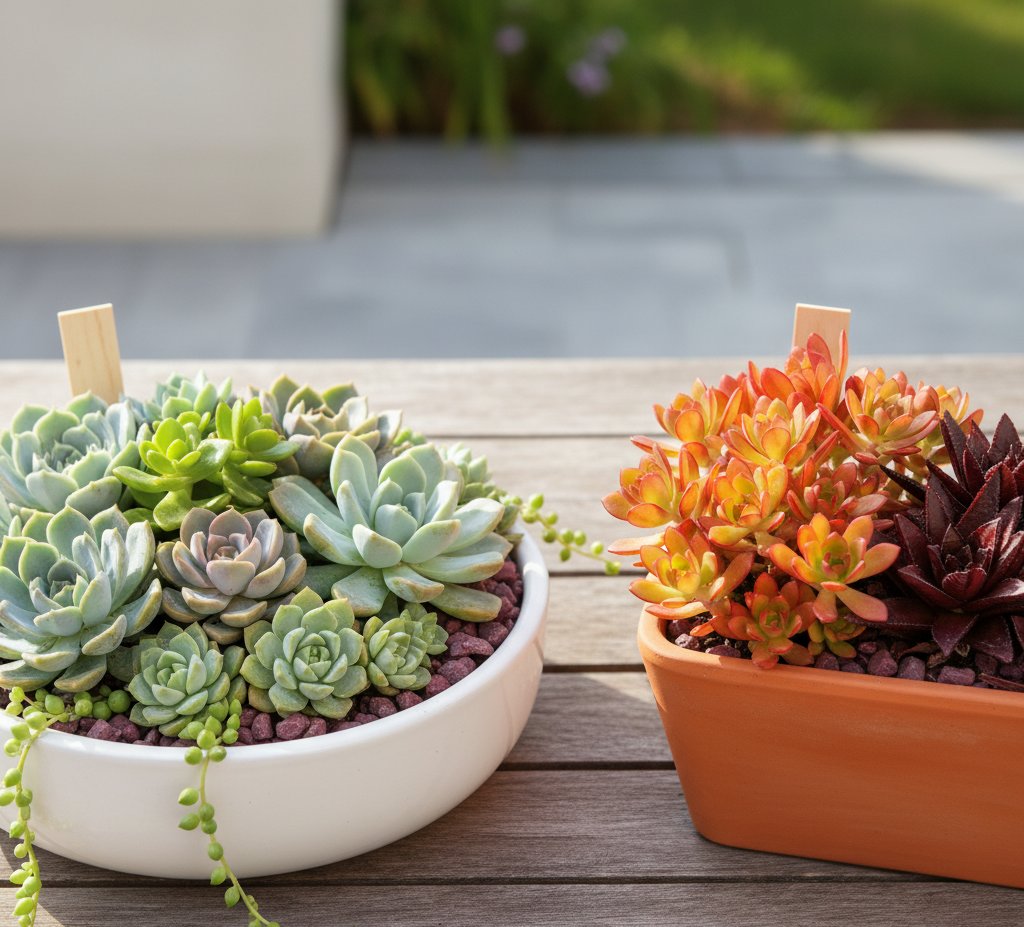Succulent Arrangements By Color
Color plays a big role in how a succulent arrangement feels and looks. Whether you prefer calm greens and blues or bold reds and oranges, choosing the right mix of hues can change a simple planter into a striking display. You create balance and visual interest when you arrange succulents by color, turning ordinary plants into a cohesive design.
You can group succulents with similar tones for a soft, unified look or mix contrasting shades for more energy and depth. Each color choice sets a different mood, cool tones bring calm, while warm tones add vibrancy. With a few basic design ideas and an understanding of how color works, you can shape arrangements that match your space and style.
Understanding Succulent Arrangements by Color
Color affects how your succulent arrangements look and feel. When you plan your design, you can use color theory to create harmony, apply color schemes for balance, and mix textures and shapes to add depth and contrast.
Color Theory in Succulent Design
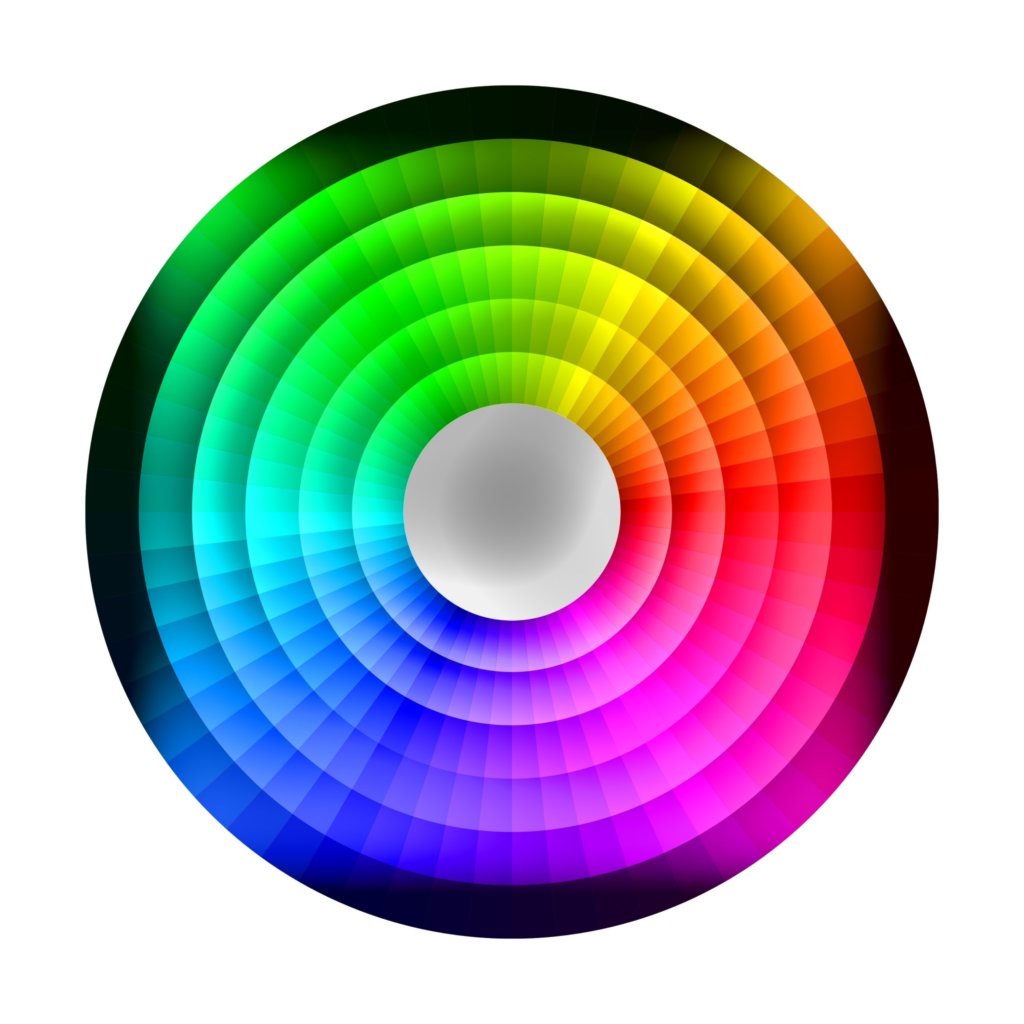
Color theory helps you choose succulents that complement each other. The color wheel shows primary, secondary, and tertiary colors, which you can use to build pleasing combinations.
You can create analogous arrangements using colors next to each other on the wheel, like green, blue, and purple. A complementary scheme pairs opposite colors such as red and green for a bold contrast. Monochromatic designs use one color in different shades, giving a calm and unified look.
Succulent varieties such as Echeveria, Sedum, and Kalanchoe come in a wide range of hues. For example, Echeveria often shows pink or blue tones, while Sedum may display greens and yellows. Understanding these natural colors allows you to plan combinations that look balanced in both indoor and outdoor settings.
Popular Color Schemes for Succulent Arrangements
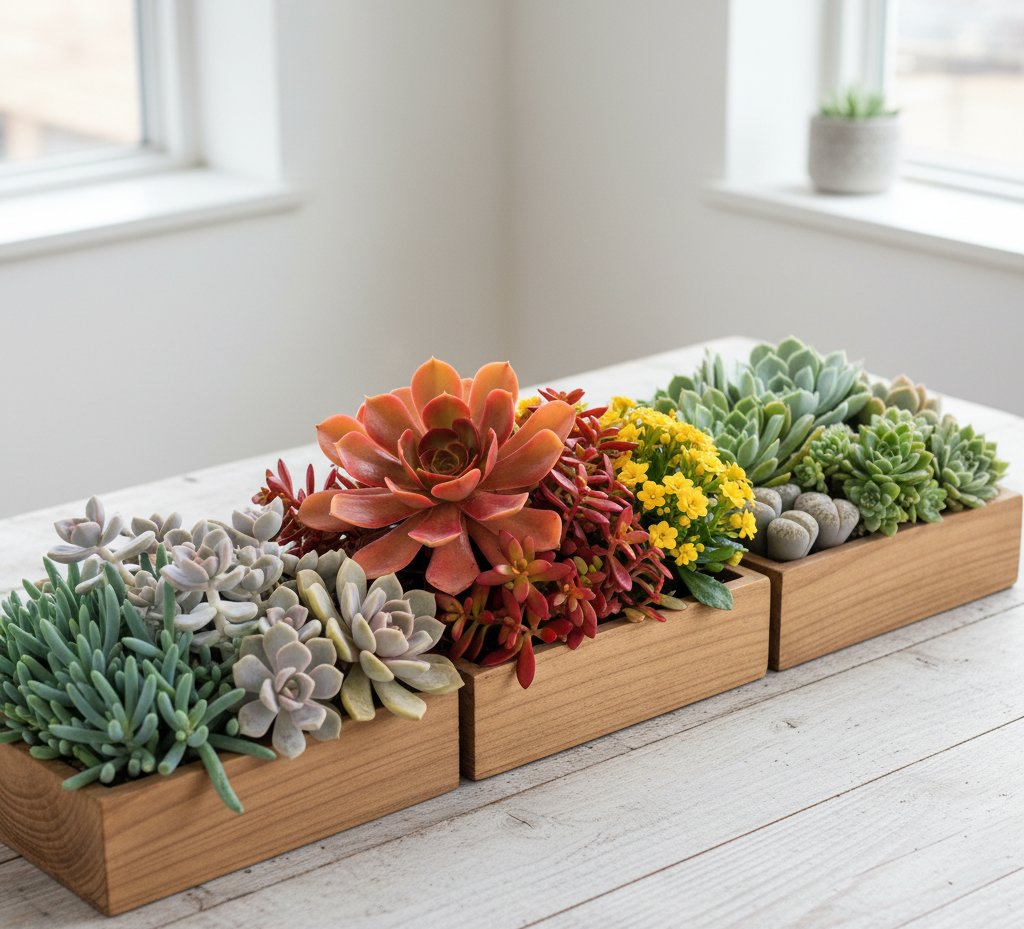
Choosing a color scheme helps you set the mood of your arrangement. A cool palette using blues, purples, and silvers from plants like Senecio (blue chalksticks) or Graptopetalum (ghost plant) gives a calm, modern feel.
A warm palette with reds, oranges, and yellows from Aeonium, Crassula, or Kalanchoe adds energy and draws attention. You can also blend neutral tones, such as gray Lithops or green Hens and Chicks (Sempervivum), to soften bright colors.
| Scheme Type | Example Colors | Example Succulents |
|---|---|---|
| Cool | Blue, purple, silver | Senecio, Graptopetalum |
| Warm | Red, orange, yellow | Aeonium, Crassula, Kalanchoe |
| Neutral | Gray, green | Lithops, Sempervivum |
Combining Textures and Shapes with Color
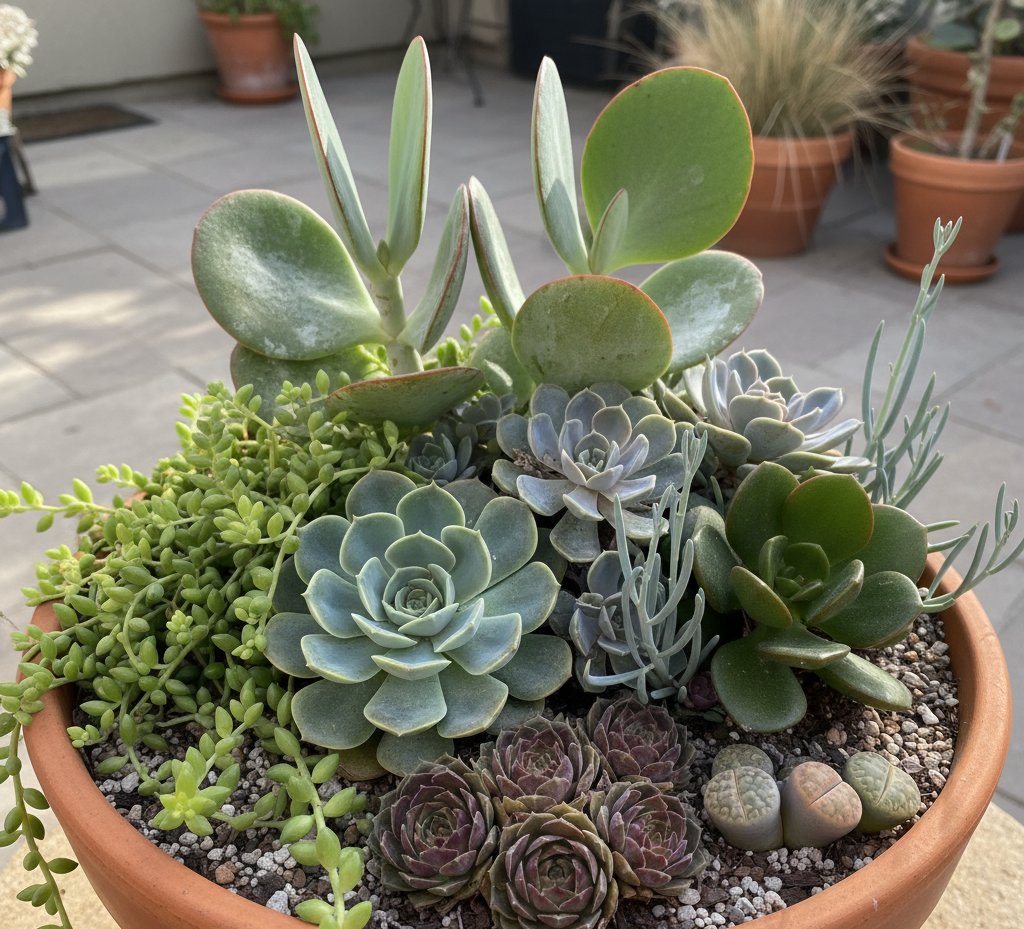
Texture and shape strengthen the effect of color. Smooth rosettes of Echeveria contrast nicely with the trailing forms of Sedum or the upright leaves of a Paddle Plant (Kalanchoe thyrsiflora).
Mixing matte and glossy surfaces adds interest even when colors are similar. For example, pair the powdery blue of Ghost Plant (Graptopetalum paraguayense) with the shiny green of Crassula for subtle contrast.
You can also vary leaf size and pattern. Rounded Hens and Chicks (Sempervivum) balance tall, narrow Senecio stems, while compact Lithops add a unique accent. These combinations make your arrangement look structured, colorful, and natural.
Designing Succulent Arrangements by Color Palette
You can create a balanced and appealing succulent display by choosing colors that work together naturally. Using color theory helps you design arrangements that look intentional, whether you prefer a single color family or bold contrasts in your succulent planters or outdoor garden.
Monochromatic Succulent Arrangements
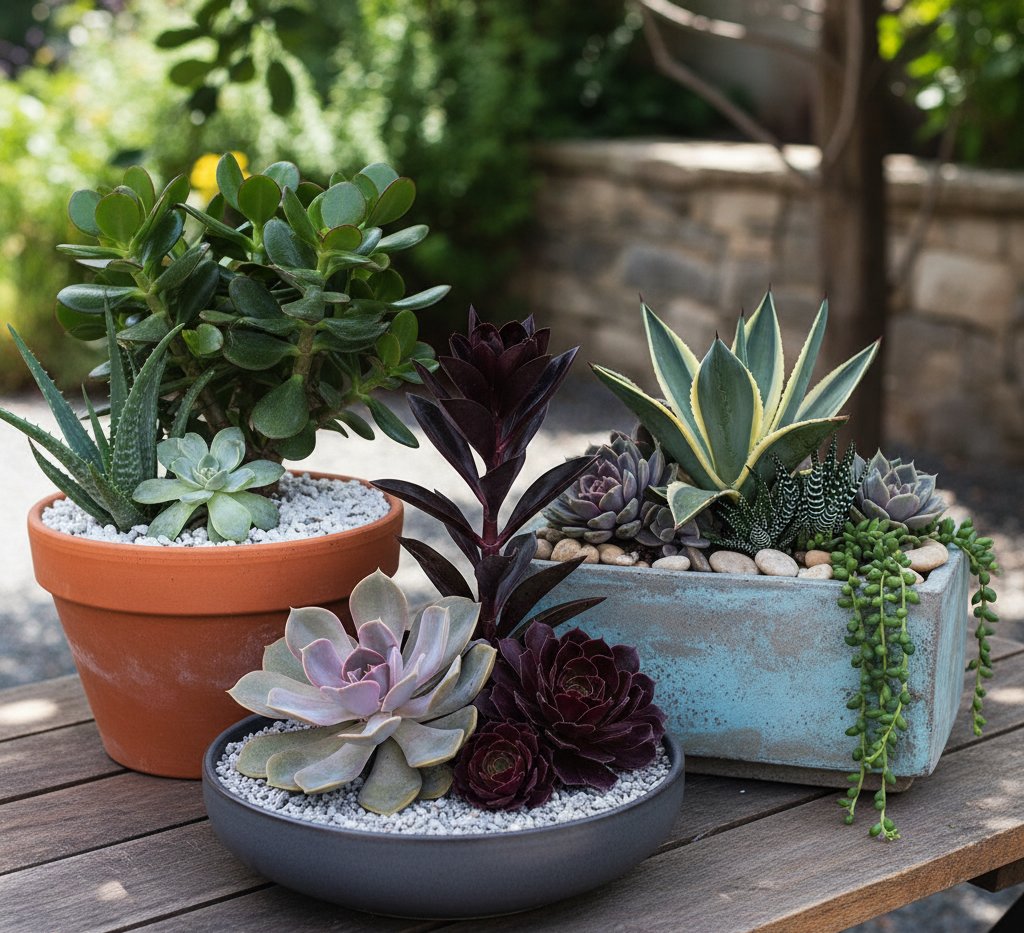
A monochromatic design uses different shades, tints, and tones of one color. This approach creates a calm and unified look that works well in terracotta pots, succulent wreaths, and vertical succulent gardens.
For example, you might combine pale green echeverias with darker jade or blue-green haworthias. The variation in hue and texture keeps the arrangement interesting without needing multiple colors.
You can use this style for small succulent containers on a desk or large succulent gardens outdoors. To keep the design from feeling flat, choose plants with different leaf shapes or finishes, some waxy, some matte, some spiky. A simple layer of white gravel or natural pebbles helps highlight the subtle color differences.
| Color Family | Example Succulents | Suggested Planter |
|---|---|---|
| Green | Jade, Aloe, Echeveria ‘Perle von Nurnberg’ | Terracotta pot |
| Purple | Graptopetalum, Sempervivum, Aeonium | Ceramic bowl |
| Blue-Green | Agave, Sedum, Haworthia | Concrete planter |
Complementary and Analogous Color Combinations
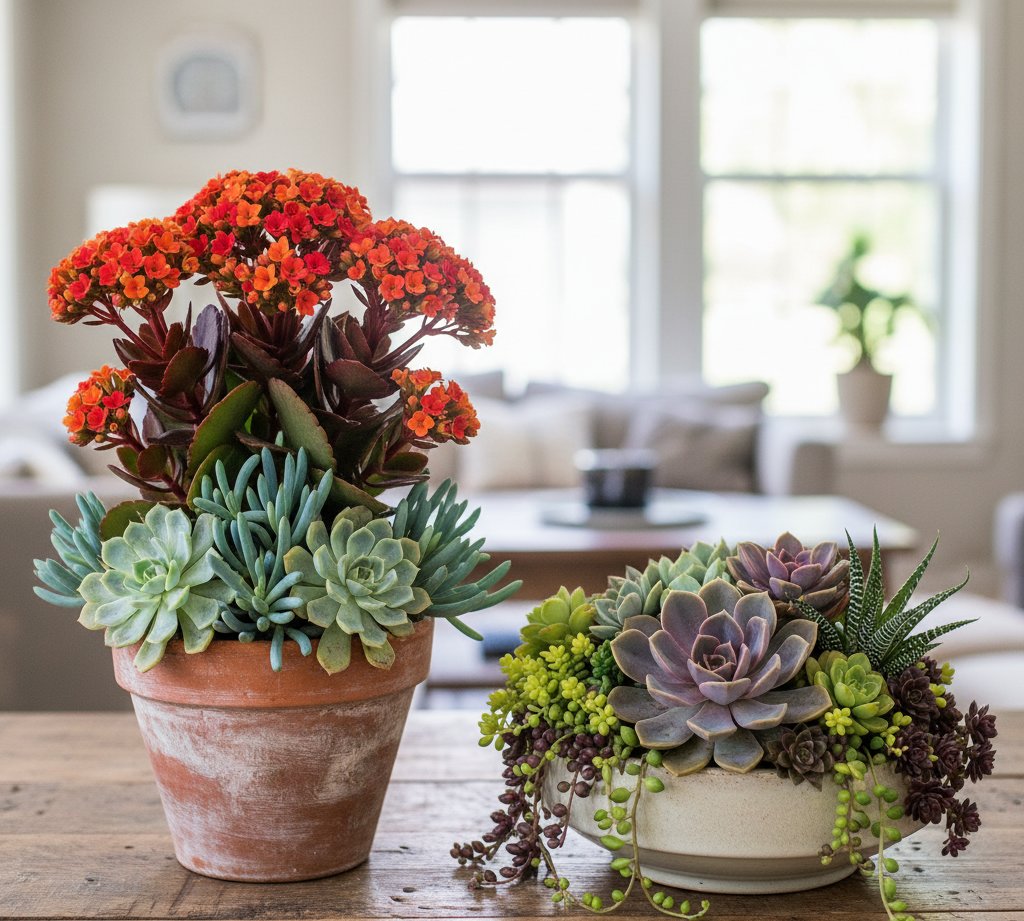
Complementary colors sit opposite each other on the color wheel, such as red and green or purple and yellow. These pairings give your succulent arrangements a strong contrast and visual energy.
Analogous colors sit next to each other, like blue, green, and teal. They create a softer, more natural look, ideal for home decor or succulent displays in calm spaces.
Try mixing orange-tinted kalanchoes with blue-green echeverias for a lively contrast. Or use green, blue, and purple succulents for a cool-toned arrangement that feels cohesive. In succulent planters, group plants by color intensity, bright tones in the center, muted shades around the edges, to guide the eye naturally.
Arranging Succulents by Height and Form
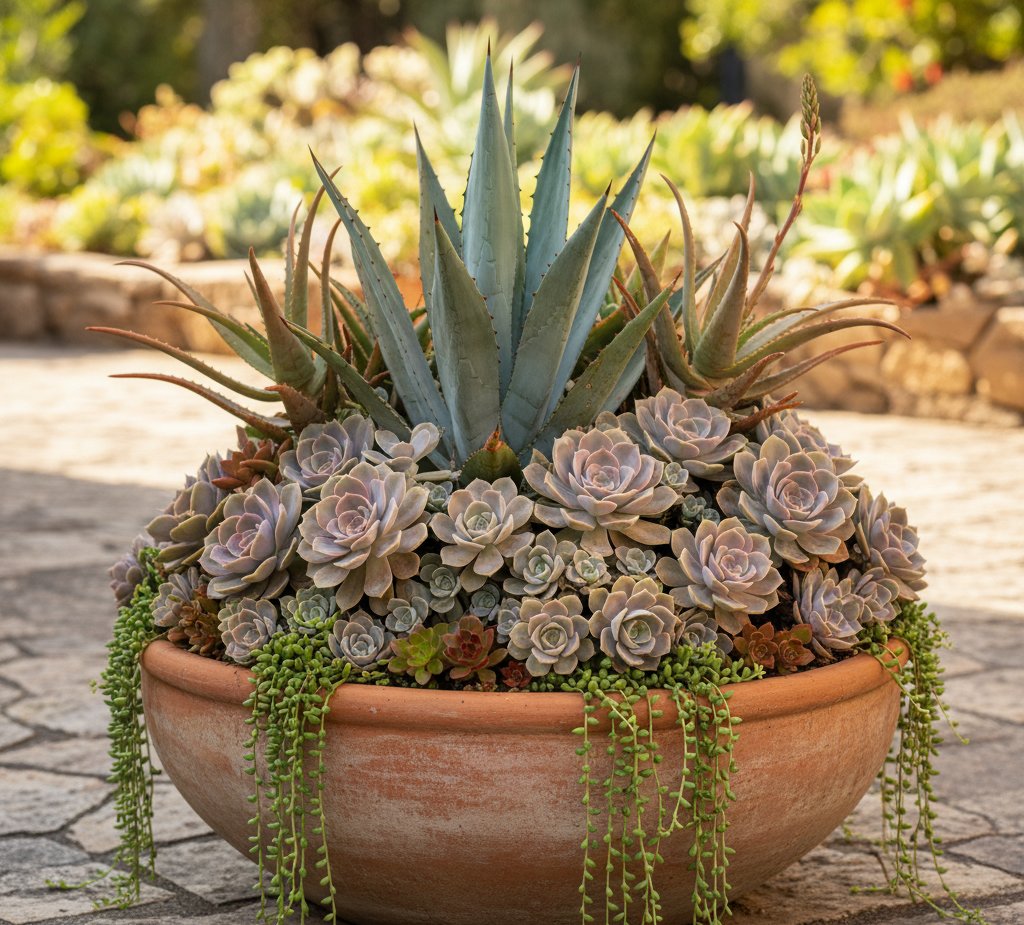
Color alone doesn’t define a good design. You also need to balance height, shape, and texture. Taller succulents like aloe or agave make strong focal points in a succulent planter, while low-growing rosettes such as echeveria fill in gaps.
Place trailing types like string of pearls near the edge of succulent containers or vertical succulent gardens to soften lines. Keep color harmony in mind as you layer heights, tall plants in neutral tones can support brighter accents below.
For an outdoor garden, repeat similar forms and colors across sections to create rhythm. In smaller succulent displays, one tall plant and several compact varieties are enough to achieve visual balance without overcrowding.
Best Succulents for Colorful Arrangements
You can create a striking display by mixing succulents with different colors, shapes, and heights. Choose plants that contrast in tone and texture to make each one stand out while keeping care needs similar for easy maintenance.
Vivid Green and Blue Succulents
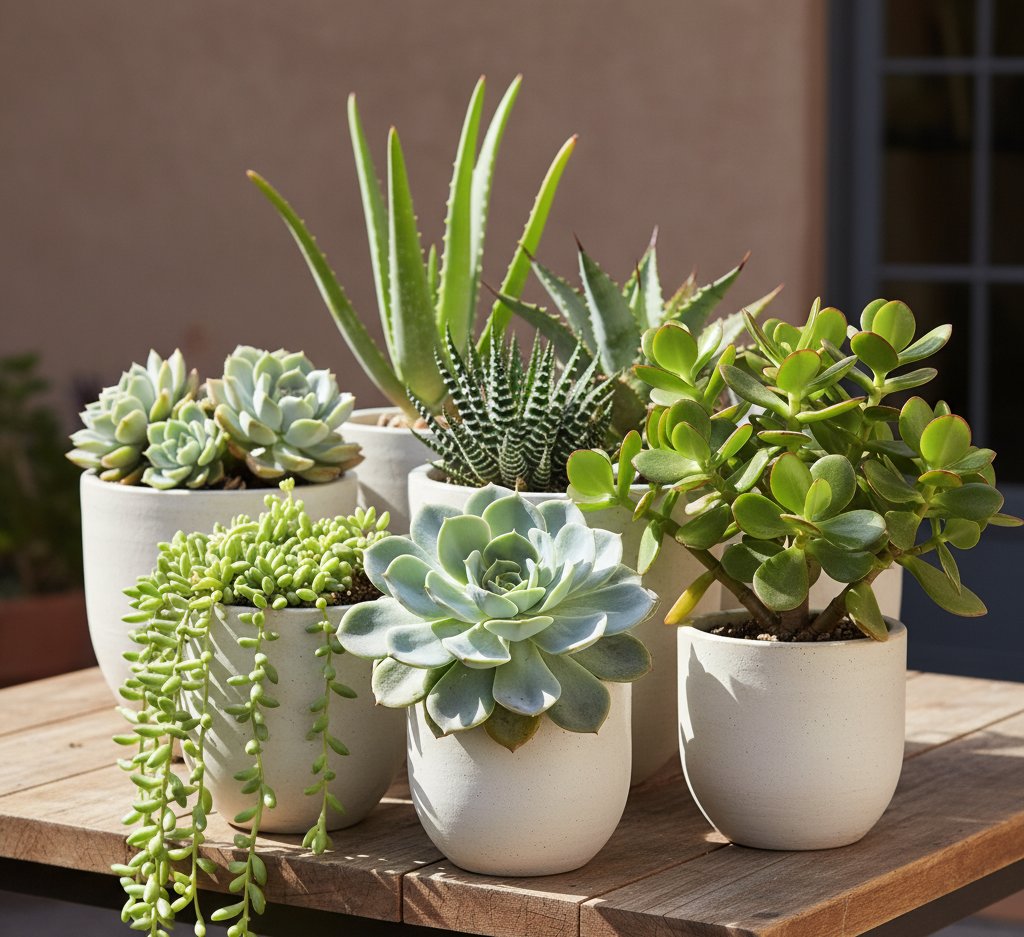
Green and blue succulents bring a calm and balanced look to your arrangement. Echeveria varieties like Echeveria peacockii (or desmetiana) feature true soft blue tones. Sedum species, such as Sedum morganianum (burro’s tail), add trailing texture and a cool green color.
Jade plants (Crassula ovata) have glossy green leaves that can develop red edges in bright light. Aloe vera and Haworthia species provide structure with their upright, patterned leaves.
For a subtle mix, pair Agave with smaller Haworthias in light-colored pots. The combination of rosette and spiked forms keeps the design interesting while maintaining a cohesive green-blue palette.
| Succulent | Color Tone | Growth Form |
|---|---|---|
| Echeveria peacockii | Soft blue-green | Rosette |
| Sedum morganianum | Pale green | Trailing |
| Crassula ovata (Jade Plant) | Deep green | Upright |
| Haworthiopsis fasciata | Dark green with white stripes | Compact |
| Aloe vera | Green | Upright |
Red, Pink, and Purple Succulent Varieties
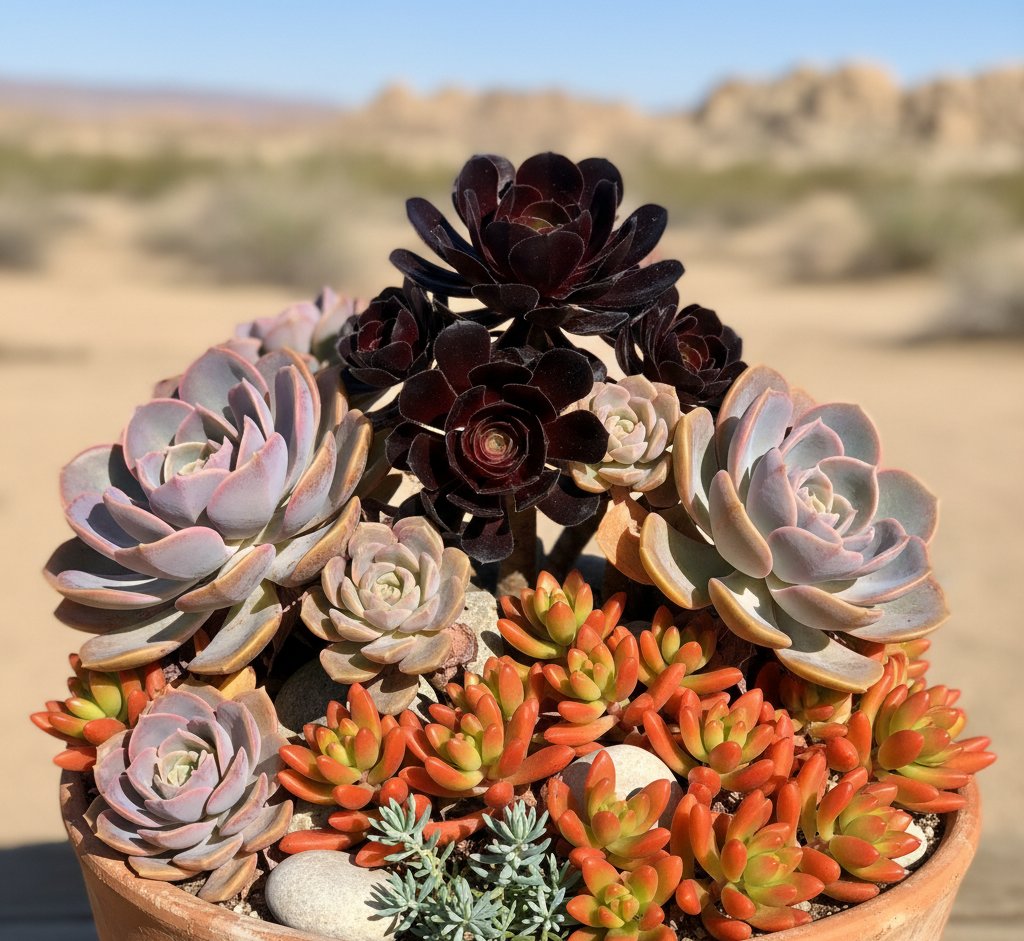
Warm-colored succulents add energy and depth. Aeonium species, such as Aeonium arboreum ‘Zwartkop’, display deep purple rosettes that contrast well with lighter plants. Echeveria ‘Afterglow’ and Echeveria ‘Lola’ show pink to lavender tones that brighten any container.
Sedum rubrotinctum (jelly bean plant) shifts from green to red under sunlight, giving your arrangement a natural gradient. Crassula capitella ‘Campfire’ glows orange-red and pairs well with neutral stones or pale pots.
Keep these succulents in bright light to preserve their vivid hues. When combined with green or blue species, they create a balanced yet colorful composition that draws attention without overwhelming the space.
Unique Trailing and Textured Succulents
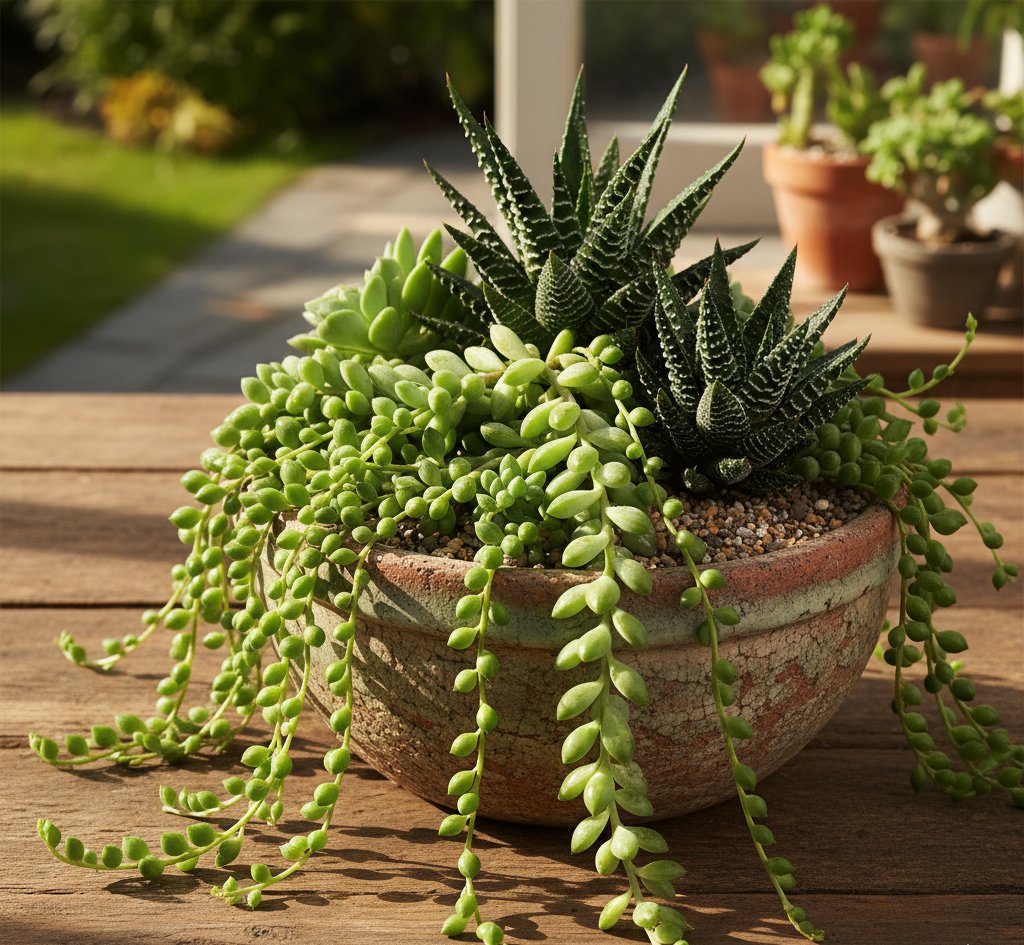
Trailing succulents add movement and soften hard edges. String of pearls (Senecio rowleyanus) produces small, round leaves that hang like beads. String of bananas (Senecio radicans) offers a similar look with curved, banana-shaped leaves.
Burro’s tail (Sedum morganianum) adds a thicker texture and pale green color. These plants work well in hanging planters or at the edges of shallow containers. Haworthias provide contrast with their firm, structured shapes.
Mixing trailing and upright forms gives your arrangement depth. Choose well-draining soil and avoid overwatering, as these varieties store water in their leaves and can rot if kept too moist.
Hardy and Tall Succulent Options
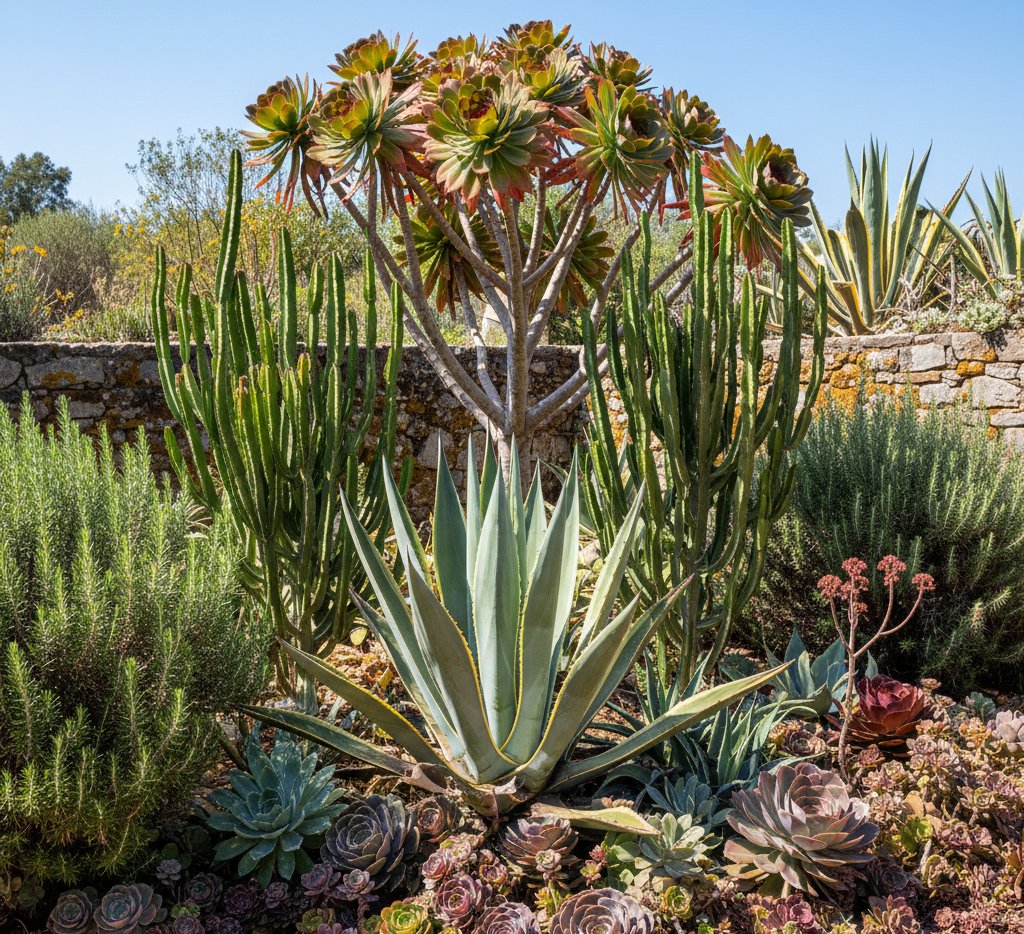
Hardy and tall succulents bring height and structure. Agave and Aloe vera form strong vertical lines, making them ideal focal points. Aeonium species can also grow tall rosettes that rise above smaller plants.
For outdoor displays, Sedums tolerate cooler temperatures and full sun. Pair them with smaller Echeveria to fill gaps at the base.
Some gardeners combine tall succulents with herbs like rosemary for a mixed-texture effect. The woody stems of rosemary contrast nicely with the fleshy leaves of succulents while sharing similar sunlight and watering needs. This combination works well in both garden beds and large containers.
Frequently Asked Questions
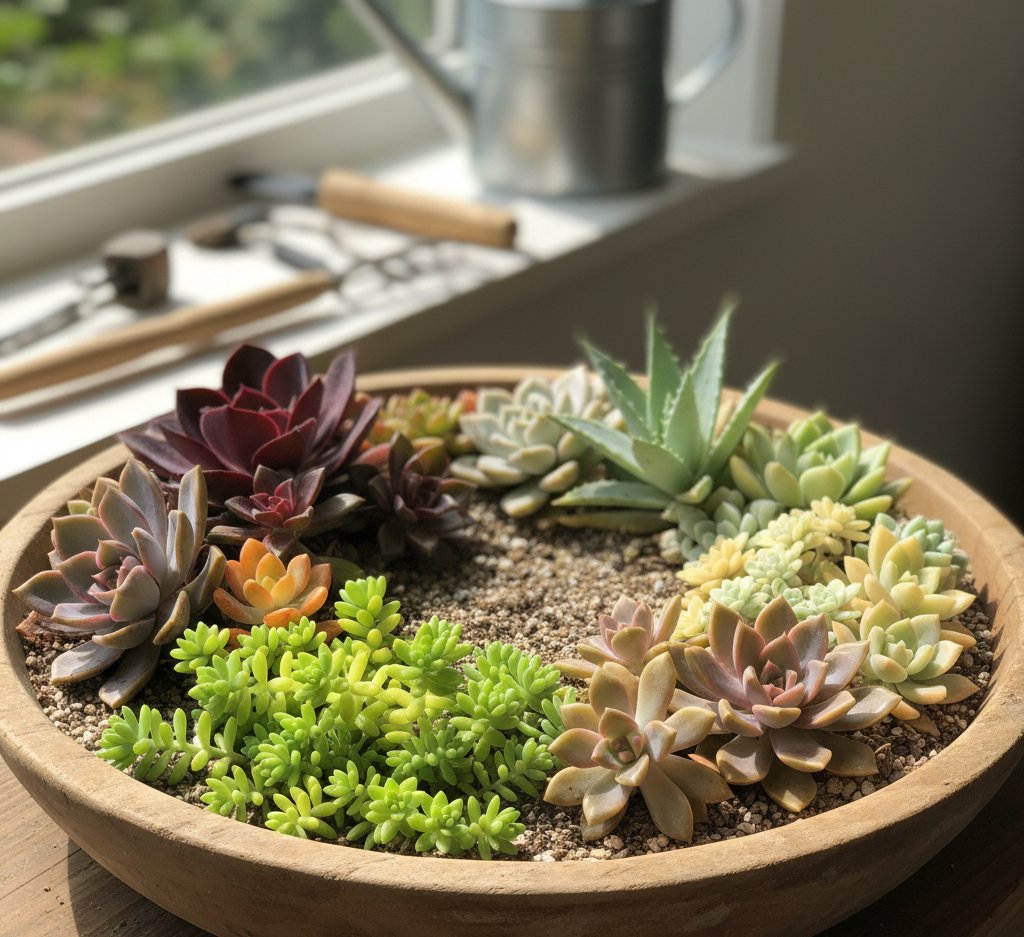
Color in succulent arrangements depends on plant selection, lighting, and care. You can use color theory to plan combinations that highlight contrast or harmony while keeping your plants healthy and vibrant.
How do I choose the right color palette for my succulent arrangement?
Start by deciding the mood you want to create. Use analogous colors, like greens and blues, for a calm look, or complementary colors, like red and green, for stronger contrast. Consider the natural light in your space, since lighting affects how colors appear.
What are some popular color combinations for indoor succulent gardens?
Common indoor palettes include green and purple, blue and silver, or red and orange. These combinations balance warm and cool tones while staying visually appealing. Neutral containers, such as white or gray pots, help highlight the plants’ colors.
Can I create a monochromatic succulent arrangement and what are the best practices?
Yes. Choose succulents of the same color family but with different shades and textures, such as pale green, mint, and deep jade. Vary leaf shapes and sizes to keep the display interesting. Place the arrangement where lighting enhances subtle color differences.
What considerations should I make for seasonal color variations in succulent arrangements?
Succulent colors often shift with temperature and sunlight changes. Cooler seasons can bring out deeper reds and purples, while warm weather may fade tones to lighter greens. Plan your arrangement to include species that show appealing variations year-round.
How does sunlight exposure affect the coloration of succulents in an arrangement?
Sunlight intensity directly impacts pigment development. Bright light often deepens red, orange, or purple hues, while low light can cause colors to fade to green. Rotate your arrangement regularly so all sides receive even exposure.
What are the tips for maintaining vibrant colors in my succulent display?
Provide enough sunlight, avoid overwatering, and use well-draining soil. Stress from slight drought or bright light can enhance pigmentation without harming the plant. Clean dust from leaves so light reaches the surface evenly.

